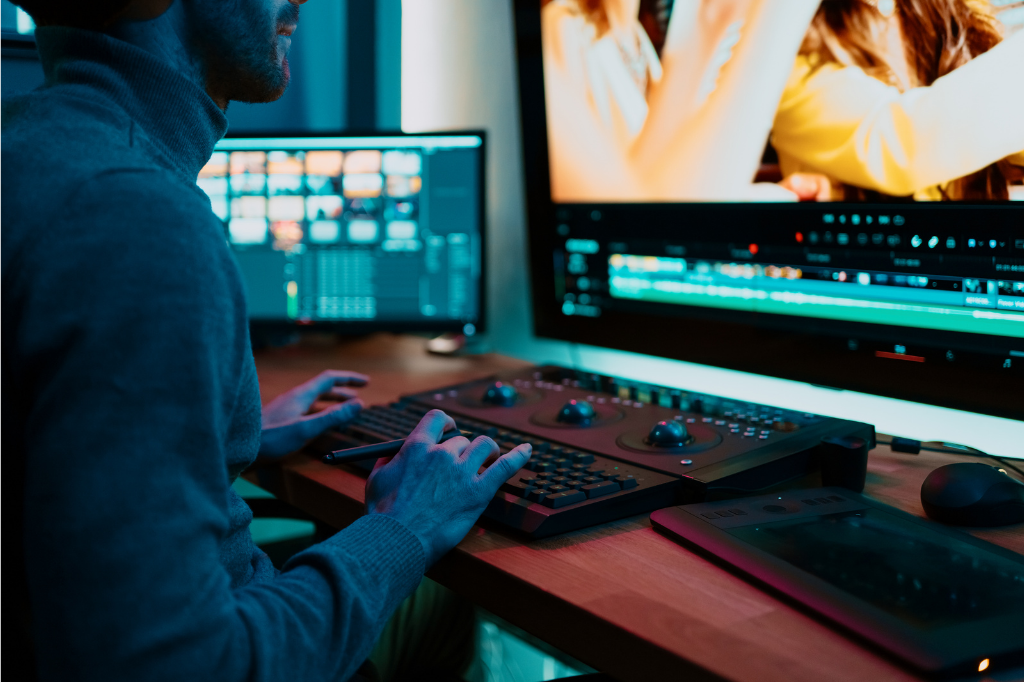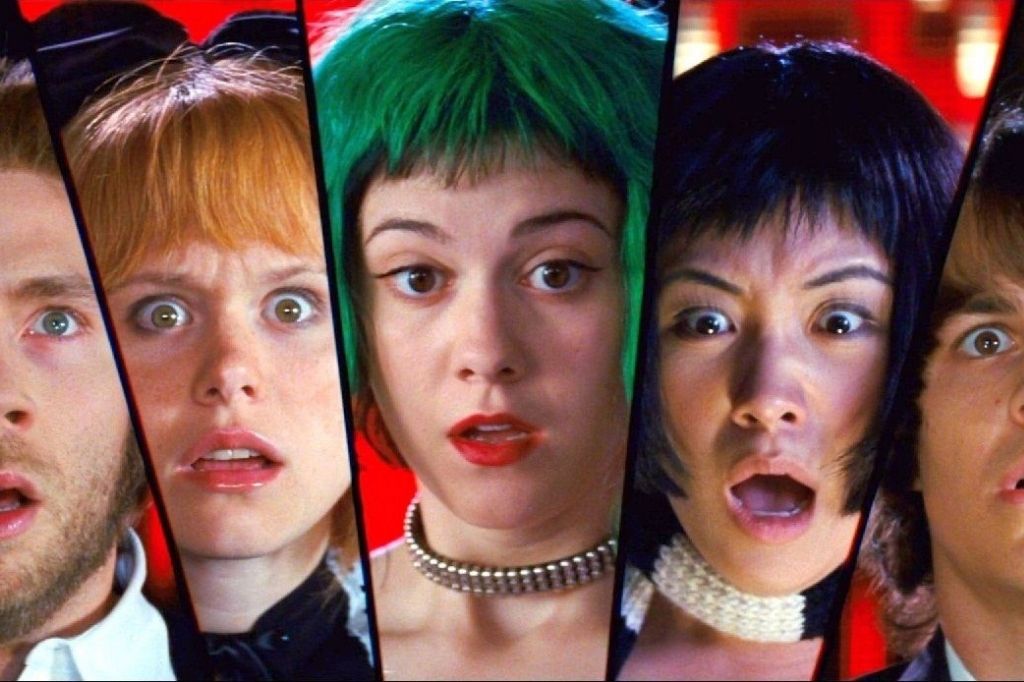Do you want to become a better editor? Understanding editing theory will help you greatly on your quest to craft more evocative, moving videos.
Today, we will introduce you to some of the historical schools of thought regarding editing theory so you can start making more considered editing decisions. This will include a bit about continuity editing, as well as the theory of montage, which delves a little bit into complexity or discontinuity editing.
CONTINUITY EDITING: AN INTRODUCTION TO EDITORIAL GRAMMAR
Firstly, let’s dive into continuity editing. This should be your first consideration when cutting and edit. Keeping it in mind will help you to become a better editor.
Continuity editing is part of editorial grammar: in other words, the rules that we use to structure an edit the way that we would structure a sentence. It seeks to maintain “continuity” so that the viewer is not taken out of the piece that you have constructed.
While this might seem a little bit boring, it’s very important that we understand these principles and how to use them before we go ahead and break them in order to advance the plots or create a dramatic effect.
What does continuity editing actually consist of though? There are five key considerations that an editor must keep in mind when attempting to maintain continuity in their video.
#1 EYE LINE
The first of these considerations is eye line. The editor must always be aware of where their subject is looking so that they can ensure the audience always knows what the subject is looking at, or maintain the sense that they are making eye contact with another subject in the scene. This involves choosing your camera angles very carefully and always cutting between your shots in a way that makes sense.
#2 EYE TRACE
The second is eye trace. The editor is responsible for guiding the viewer’s eye to the most important information on the screen. This influences how long your shots are and where objects of importance are positioned on the screen relative to shots before and shots after. Essentially, the editor has to direct the viewer’s eye through a sequence of shots so that they always end up looking at what is most important.
#3 MATCHING ACTION AND CUTTING ON ACTION
The third principle is matching action and cutting on action. Two principles that are separate, but go hand in hand with each other. The first ensures that there is continuity of action when cutting between two shots that capture the same action. This looks like finding an exact frame match for that action in both of those shots before you put them together. When done incorrectly, it can either look like the action is stuttered or like it is lagging or even repeated depending on how many duplicate frames you have.
The second — cutting on action — sounds more complicated than it actually is, but it is simply a technique that is used to smoothly transition from one shot to another. When the same action is being captured and displayed over those two shots, using this principle plays out as simply as making sure that you cut while your subject is still in motion, rather than before the motion has started or after it has ended.
#4 CONTINUITY OF OBJECTS
The fourth principle is continuity of objects. The editor is responsible for paying attention to objects that are in their given shots so that things don’t disappear and suddenly reappear when they’re cutting between various takes. This is meant to be the responsibility of the person who is the script supervisor on set. However, you as the editor are the final barrier against any continuity errors involving objects when it comes to putting together the video. You don’t want to end up in a situation like Game of Thrones with that infamous Starbucks coffee mug.
#5 THE 180-DEGREE RULE
Finally, our fifth principle is the 180-Degree Rule. And no, that is not the same rule as the one involving shutter speed. If you want to learn more about shadow speed, by the way, you can check out our amazingly in-depth video on that in the description below. Now the 180-Degree Rule in terms of editing imagines that there is a line that runs down the middle of a scene. How this plays out practically for you as an editor is that you want to ensure that when you’re cutting between various camera angles capturing the same scene, they all exist on the same side of the line.
Essentially, what you’re trying to do is keep your viewer oriented in two-dimensional space and ensure that they’re not teleporting back and forth across the line when you’re putting together a dialogue scene, for example, Now this rule is one that is made to be broken, particularly in instances where you want to disrupt, where you want to show the viewer that something has changed. Maybe a power dynamic has shifted. However, in general, when you’re just editing together a conversation, we want to seek to maintain that line so the viewer doesn’t feel disoriented.
THE THEORY OF MONTAGE
Now that we’ve dived a little bit into continuity editing, let’s unpack the theory of montage a bit. If you want to become a better editor, this is essential to understand.
In order to introduce this topic to you, we’re actually gonna quote a definition of the theory of montage from a really great YouTube channel called Crash Course.
The theory of montage proposes that films derive their ultimate power and meaning through the way that the shots are cut together, their order, duration, repetition, and rhythm.
Crash Course
What this means essentially is that you as the editor have the ability to imbue your video edit with significance based on these factors. That includes things like how long or how short your shots are, the order in which you put things together on your timeline when you’re constructing your edit, etc. It includes things like repetition: whether a shot is shown once shown twice, whether actions are repeated or only shown once. And then, of course, rhythm, which is dictated by the pace of your edit.
Montage editing is also sometimes referred to as complexity or discontinuity editing. These are umbrella terms for all editing theory and practice that seeks to create a relationship between two or more shots or draw attention to cuts in order to infer meaning. This is one of the reasons that it’s actually referred to as “discontinuity editing”. In a sense, while continuity editing seeks to make the cuts as invisible as possible to the viewer so that they are not paying attention to the edit and just watching the piece, this idea seeks to draw attention to those cuts that the viewer is taking away some sort of significance or noticing when something has changed.
There are five main types of montage that you can use in your edits. Although, don’t be shy: you can definitely use more than one at the same time if you were so inclined. In fact, most films do exactly this.
#1 EDITING THEORY: INTELLECTUAL MONTAGE
The first of these theories is known as intellectual montage. It can be defined as the juxtaposition of two otherwise unrelated images, which when brought together and put one after the other can create a third idea in your mind as the viewer. You also might know it as the Kuleshov Effect. We could explain this principle in more detail to you, but why should we, when we could have a true legend of cinema do exactly that for us. So let’s roll this clip of none other than Alfred Hitchcock explaining the Kuleshov Effect to us and the effect that it can create in your edits.
#2 EDITING THEORY: TONAL MONTAGE
Next up, we have tonal montage, which is the combination of two or more shots that have similar tonal, thematic qualities to build on each other or reinforce the emotional or psychological meaning of a video edit.
This sounds a little bit complicated, but actually, it’s as simple as the following. If you put together a bunch of shots of baby animals, young children, a meadow blooming with flowers, a sunrise, happy lifegiving colours like green, like yellow, you’re immediately going to be thinking of something like new beginnings, maybe springtime hope, the joy and the essence of life, all of these things. Whereas if you put together shots that had a completely different thematic quality, you would have different images evoked in your mind and different connotations would be coming through to you.
This sounds a little bit complicated, but actually, it’s as simple as the following. If you put together a bunch of shots of baby animals, young children, a meadow blooming with flowers, a sunrise, happy lifegiving colours like green, like yellow, you’re immediately going to be thinking of something like new beginnings, maybe springtime hope, the joy and the essence of life, all of these things. Whereas if you put together shots that had a completely different thematic quality, you would have different images evoked in your mind and different connotations would be coming through to you.
#3 EDITING THEORY: METRIC MONTAGE
Next up, we have metric montage, which occurs when shots are cut after a specified number of frames, regardless of their contents, or what is going on in that shot. This is done because limiting duration like this is a really effective way to increase intensity and drama.
Using metric montage in your video edit is an incredibly effective way to create this sense of chaos or pandemonium, as if time is just relentlessly marching on regardless of what is happening in your character’s journey. At that given point, it has been used to really great effect in a lot of films showcasing battle scenes, or similarly intense and traumatic events.
#4 EDITING THEORY: RHYTHMIC MONTAGE
Next up, we have rhythmic montage. With this technique, cuts in your edit are matched to music as it builds and swells and falls and rises, and to its beats. They’re matched to sound effects and to onscreen actions. It can be used to great effect to create an incredible sense of building and excitement and anticipation in your edit. This is why it is most commonly used in movie trailers (now that we’ve mentioned it you’ll never be able to unsee it).
If you want to see a really incredible example of this used in a recent-ish movie trailer, you can go and check out the trailer for Dune.
#5 EDITING THEORY: OVERTONAL MONTAGE
Finally, we have overtonal montage, which combines metric, rhythmic and tonal montage.
Because of its complexity, overtonal montage is very difficult to illustrate in a single scene. You would have to watch an entire film to get an idea of how everything ties together and is used to create this effect and imbue that piece with significance. However, we have been told that The Godfather Part I is an excellent example of this, so go and check that film out if you wanna get a better idea of how overtonal montage can be used to create meaning in an edit.
We hope that you found this blog post helpful and feel like you are well on your way to becoming a better video editor. If you would prefer to consume this information in an audiovisual format, check out this video we created for the OrmsTV YouTube channel that covers the same topic.








